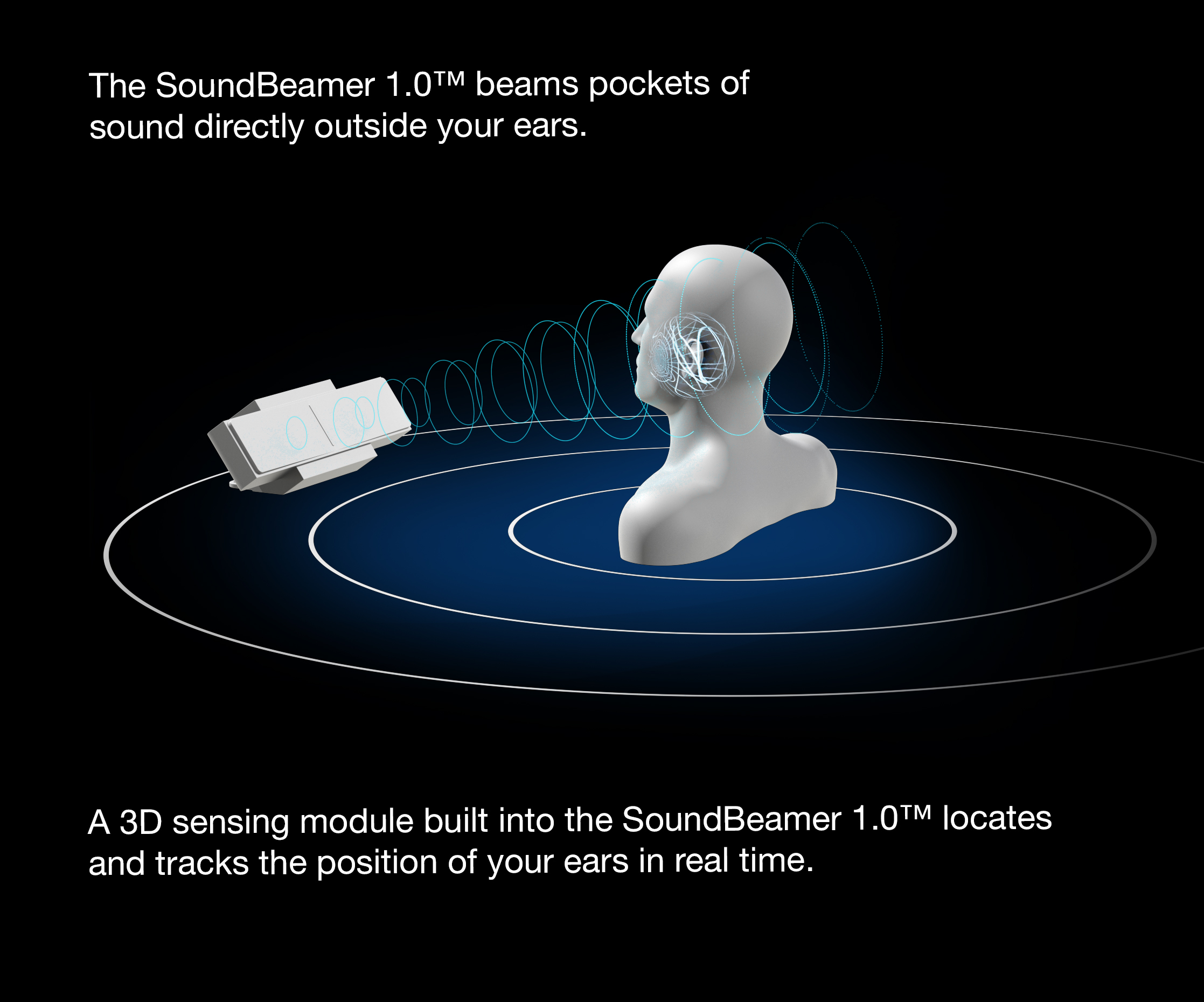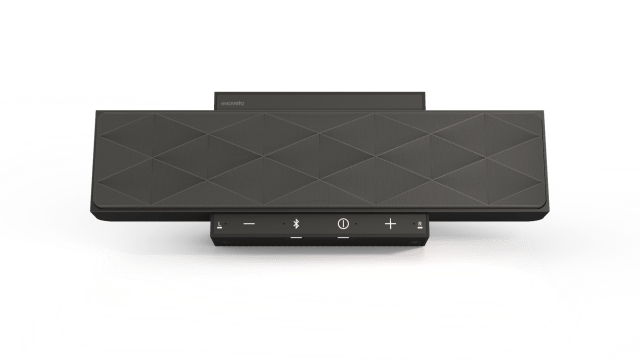Open-ear audio is having a moment. JLab and Bose both have sunglasses that double as discreet headphones, but perhaps the most intriguing open-ear technology I’ve seen so far is the SoundBeamer, a device that can supposedly beam sound directly into your ears and your ears alone.
Israeli startup Noveto designed the device to sit on your desktop and use a 3D module to identify and track your ears. Noveto CEO Christophe Ramstein said the device then creates “invisible sound pockets” on either side of your head. It doesn’t matter if you have long hair, a thick beard, glasses, or even a face mask — the gadget can supposedly recognise individuals and keep up with them in real-time.
[referenced id=”1667636″ url=”https://gizmodo.com.au/2021/01/i-love-the-new-bose-frames-even-if-i-look-like-an-absolute-jabroni/” thumb=”https://gizmodo.com.au/wp-content/uploads/2021/01/28/prjdtdny034dedvfc1xj-300×169.jpg” title=”I Love The New Bose Frames Even If I Look Like an Absolute Jabroni” excerpt=”I liked the original Bose Frames. They were stylish sunglasses that featured audio-based augmented reality, which actually seemed like a clever workaround for the technological challenges of smart glasses. But alas, Bose AR wasn’t meant to be. Last summer, the company shuttered that division and as a result, Bose Frames…”]
The wild part is Noveto claims the audio is private. Unlike regular speakers, which are meant to fill a room with sound, the SoundBeamer is designed to be a device that delivers personalised audio. Ramstein said this is possible because the device has a high level of acoustic attenuation. Put simply, the sound is dampened so it gets quieter by about 20dB over a distance of three feet. Normal speakers, according to Ramstein, only dampen sound by about 3dB across an entire room. So with the SoundBeamer, if you’re listening to music at roughly 75dB, someone standing fairly close to you might be able to tell you’re listening to something, but not exactly what. If you were listening at a quieter volume, they might not hear anything at all.
For these reasons, even though the SoundBeamer might look like a mini speaker or soundbar for your desk, it’s really more akin to a pair of headphones.
“What happens is we’re using the ability of the non-linearity of the air to convey inaudible sounds and then the ability to create audible sounds at one precise location in space,” Ramstein explained to Gizmodo over video. “What that means is we’re creating two pockets of sounds exactly based on where your head is. We create those pockets of audible sounds and each of them is independent, which means that our technology acts like invisible headphones.”
Some initial reports about the SoundBeamer came out a few months ago, but today Noveto is announcing some new hardware and software features. Now the device has a new AI-based built-in voice, which is capable of facial and gesture recognition as well as monitoring ambient sound.
Ramstein explained that the AI isn’t like the digital assistants we’ve become familiar with.
“We’re not building the engine to play music. I’m not saying, ‘Play my music or tell me a joke.’ We don’t do that,” Ramstein said.
The AI is there so that the device can better intuit what you’re asking for so you can get a better overall experience. Ramstein also added that no data collected via the SoundBeamer will be uploaded to the cloud, as everything is built-in and on-device.

This stuff sounds like it’s straight out of sci-fi. With other open-ear audio devices, generally, you can clearly see the speaker component and it’s placed close to the ear. While the audio quality might not end up being to your preference, it’s easy to understand how audio travels from the open-ear headphone to your ear. This is a much harder gadget to wrap your head around, and in the pandemic era, it’s also a gadget that’s impossible to demo. Personalised, sound-beaming audio doesn’t exactly translate well over a Zoom call. We can’t say for sure that it works as advertised until we try one for ourselves. Still, it would be pretty cool if instead of having to slip on headphones every time my husband takes a business call in our tiny studio apartment, a device could just beam his Zoom audio straight into his ears.
The first iteration of this device is meant to be stationary for a single person. However, Ramstein said that a second version may be able to support multiple users at once. As for potential future applications, Ramstein is ambitious. Envision, say, treadmills that can beam audio to your ears so no one at the gym has to wear headphones at all. Or going to a night at the movies and being able to send audio in different languages to each person. Or art museum tours where you can specify how much you want to hear about a particular painting in the language of your choice.
Alas, right now the SoundBeamer is only available for preorder on Kickstarter and is expected to retail for $US595 ($769) later this year. (Early backers will get a discounted price of $US345 ($446).) We usually caution against crowd-sourced gadgets that can easily turn out to be vaporware, leaving backers empty-handed after months of waiting. However, Ramstein is confident Noveto will be able to deliver the device in Q4 this year, and said the company is partnering with Foxconn — yes, Apple’s iPhone manufacturing partner Foxconn — to manufacture the device. And he’s optimistic that this tech won’t be limited to Noveto devices only.
“The good news is that when it’s ready, it’s also going to be ready for OEMs and the big tech companies,” Ramstein said. “Going from the Noveto-branded product that we’re shipping this year to anybody else who can integrate is going to be fairly easy. All the parts are produced by Foxconn and our partners, and we have all the intelligence being packaged in the chipsets, plus the software that comes with it will make it very easy to integrate.”
Needless to say, we are very curious to try it out for ourselves.
